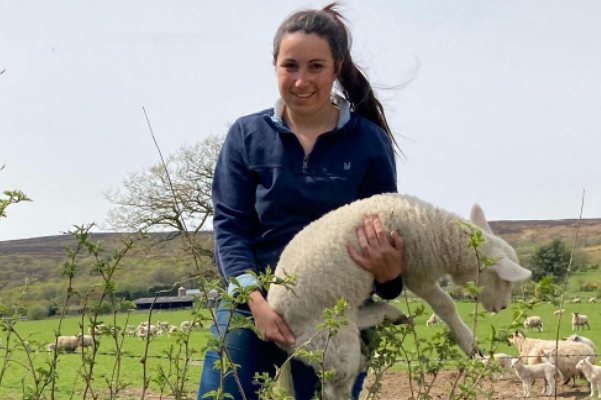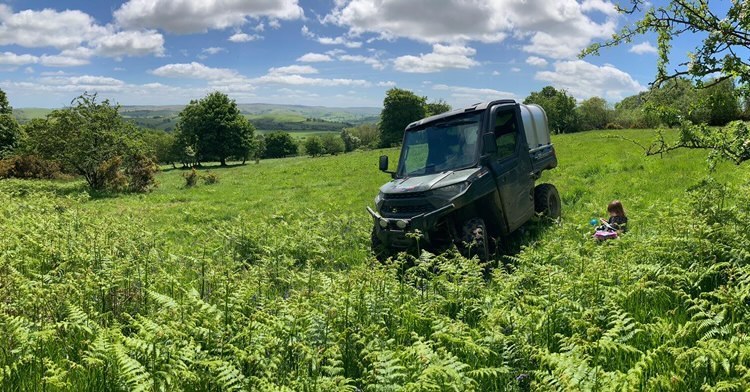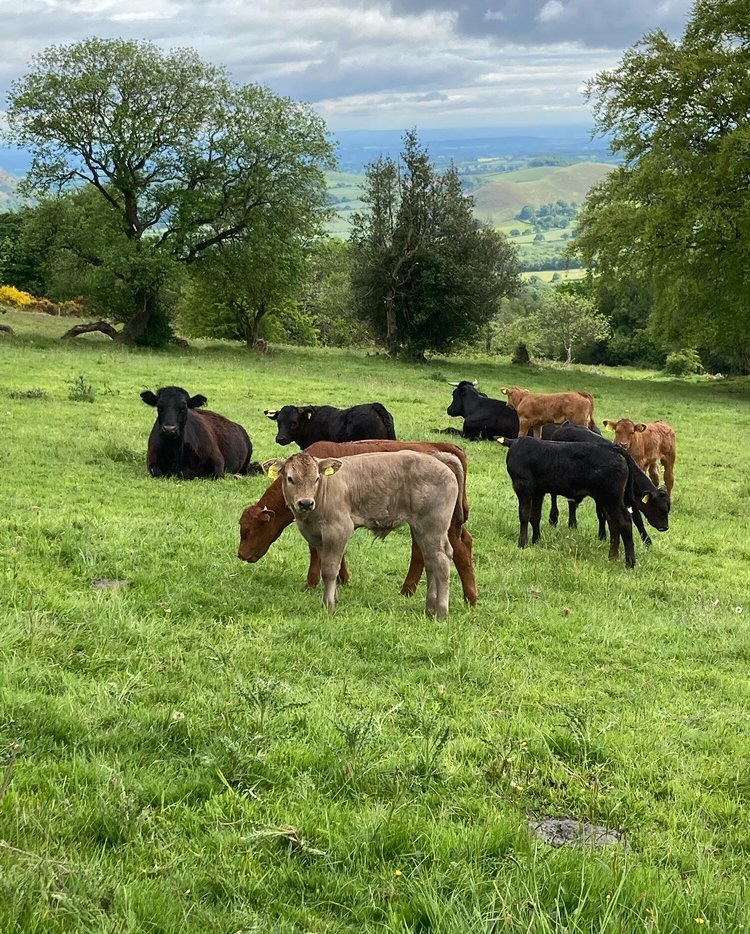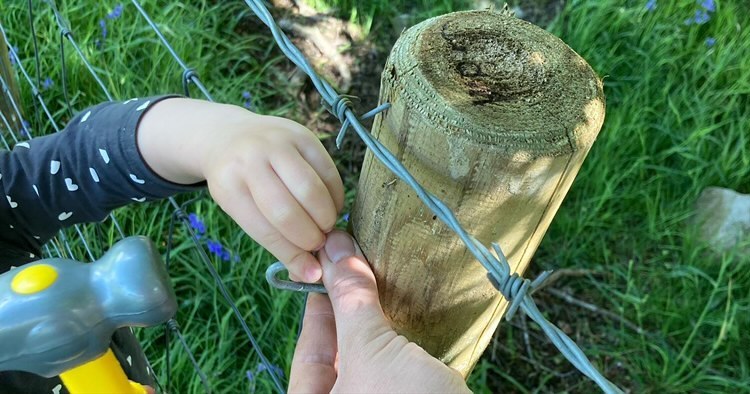Farming in Britain – Life as a farmer English with Rhi Pinches

In this rural community blog we spoke to Rhi Pinches (@the_farmer_not_the_wife), who is an English farmer based in Shropshire. She farms cattle and sheep with her father.
Hello! For those of you that didn’t catch the last post from me, my name is Rhi and I am a beef and sheep farming mother of girls from Shropshire.
Farms are busy places which also provide us with a never ending to-do list ranging from maintenance of buildings, to vaccinating lambs, to calving cows, to spreading muck… you get the idea. There is a huge variety of practices that we challenge ourselves to daily.
Contrary to popular belief, I find the month of May a very busy time. People tend to assume that once lambing has been completed, the hardest part is over, however it is merely the beginning. Each year I generally welcome May by gathering all of our ewes and lambs in manageable groups and working my way through them to ensure every ewe has a dose of fluke and worm and every lamb has their first wormer, first dose of bravoxin (other people may use covexin or ovivac for example), rings on their tails and testicles and their flock mark, which is a blue P on their rump. Mid May, I will then move the sheep off all of our silage fields to allow the grass to grow ready for cutting in July. I then continue to see every sheep daily until shearing time to ensure none of them are stuck on their backs (which is a very common way for a ewe to lose her life if she isn’t spotted and saved soon). I am also looking out closely for any health issues such as mastitis or fly strike for example.

Most excitingly, May sees the largest percentage of our baby calves born. We currently run three limousin bulls and one charolais bull with our mixed breed suckler cows who give birth outdoors on a dry hillside where they’re also offered chopped silage bales to eat. They’re easy to access and close enough to handle if they require us to intervene; reasons for this could be a complicated birth or a calf not sucking quick enough (If this is the case we need to get the calf and mother down into the handling yard to encourage the calf to feed correctly off his/her mother.) Another reason we might get a cow into the yard, is if she has a massive amount of milk, resulting in us purchasing an extra calf or even two for her to feed alongside her own, this is called double-suckling and although it’s rewarding, it’s an awful lot of extra work and dedication on our behalf… the cows love it though as they’re bribed with cake (hard feed concentrate) twice a day!

Fencing and fieldwork are two other big aspects of the type of work we carry out throughout May. Both practices are increasingly costly due to the rising prices of fuels and materials yet are totally essential in order for our beef and sheep farm to function efficiently whist influencing different species and habitats that we encourage alongside our livestock. Next time I hope to share with you some findings from some surveys we are currently hosting on our land regarding wildlife.

If you’re a farmer and you’d like to be featured in our blog please drop us a DM on Instagram – @aplanrural





